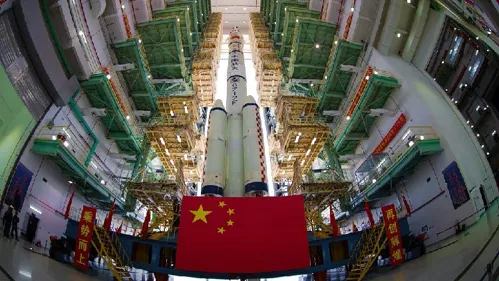Shenzhou-19 and Long March-2F Boost Transport Capacity and Reliability

On October 30, Shenzhou-19 was launched, marking the 14th mission of China's Shenzhou manned spacecraft series. This mission underscores China's ongoing advancements in aerospace technology, particularly in enhancing the transport capacity and safety of manned spaceflights.
Shenzhou-19 is designed with an optimized layout and boasts the highest loading capacity in the spacecraft series, ensuring compliance with rigorous reliability and safety standards. The spacecraft comprises three distinct modules: the orbital module, the re-entry module, and the propellant module.
The orbital module serves as the living and working space for astronauts during their journey, while the re-entry module functions as the control center and is designed to return to Earth. The propellant module is pivotal for providing necessary power to the spacecraft.
Significant optimizations in the equipment and layout within the orbital module have led to a 20 percent increase in loading space. This enhancement allows Shenzhou-19 to transport more critical and time-sensitive supplies, creating a more comfortable environment for astronauts, as explained by Liu Qingbo from the China Aerospace Science and Technology Corporation.
Before its launch, the development team conducted extensive tests to verify the transport capacity of the Shenzhou-19 spacecraft. Liu noted that improvements will be continuously made to future Shenzhou spacecraft, with the goal of providing more efficient and stable support for the operations of the China Space Station.
Turning to launch technology, the Long March-2F rocket, which carried the Shenzhou-19 into space, stands as the backbone of China’s crewed space missions. This rocket, known as 'Shenjian' or 'Divine Arrow,' has a remarkable track record.
Stretching 58.3 meters and weighing approximately 500 tonnes at takeoff, the Long March-2F is equipped with four powerful boosters. Since its debut flight in 1999, it has maintained a stellar 100 percent success rate for launches.
Dedicated to astronaut safety, the Long March-2F features specialized fault detection and handling systems, alongside an escape system. This system is crucial for ensuring the safety of the crew, as detailed by Chen Muye from the CASC.
Different escape modes play a vital role in the mission's safety. At lower altitudes, the escape tower is utilized for immediate rescue functions. Once surpassing 39 kilometers, the system transitions to using high-altitude escape motors that can propel the entire capsule away in emergencies.
Leading up to the Shenzhou-19 launch, the Long March-2F rocket underwent 23 technical modifications, reflecting a commitment to continuous improvement. The rocket's escape tower, equipped with six solid-fuel engines, serves as an added security measure, providing a safeguard for astronauts in unexpected situations.
Despite not having been activated in operational missions, except during testing, the escape tower remains a vital assurance for crew safety. Wan Nuo from the CASC emphasized its importance as a crucial safety feature for every mission.
Read These Next

Quick Q&A on Liver Cancer Insights for Better Health
Dr. Michael Millis discusses liver cancer prevention and detox diet myths during National Cancer Prevention Week.

China's Crewed Moon Spaceship Successfully Completes Abort Test
China's Mengzhou spacecraft completed a crucial abort test, proving its emergency escape system for astronaut safety.

Italy's Moon-Rice Project: Advancing Space Agriculture
The article discusses the Italian Space Agency's 'Moon-Rice' project, focusing on cultivating ultra-dwarf rice for sustainable food production in space, highlighting its significance for future missions.
